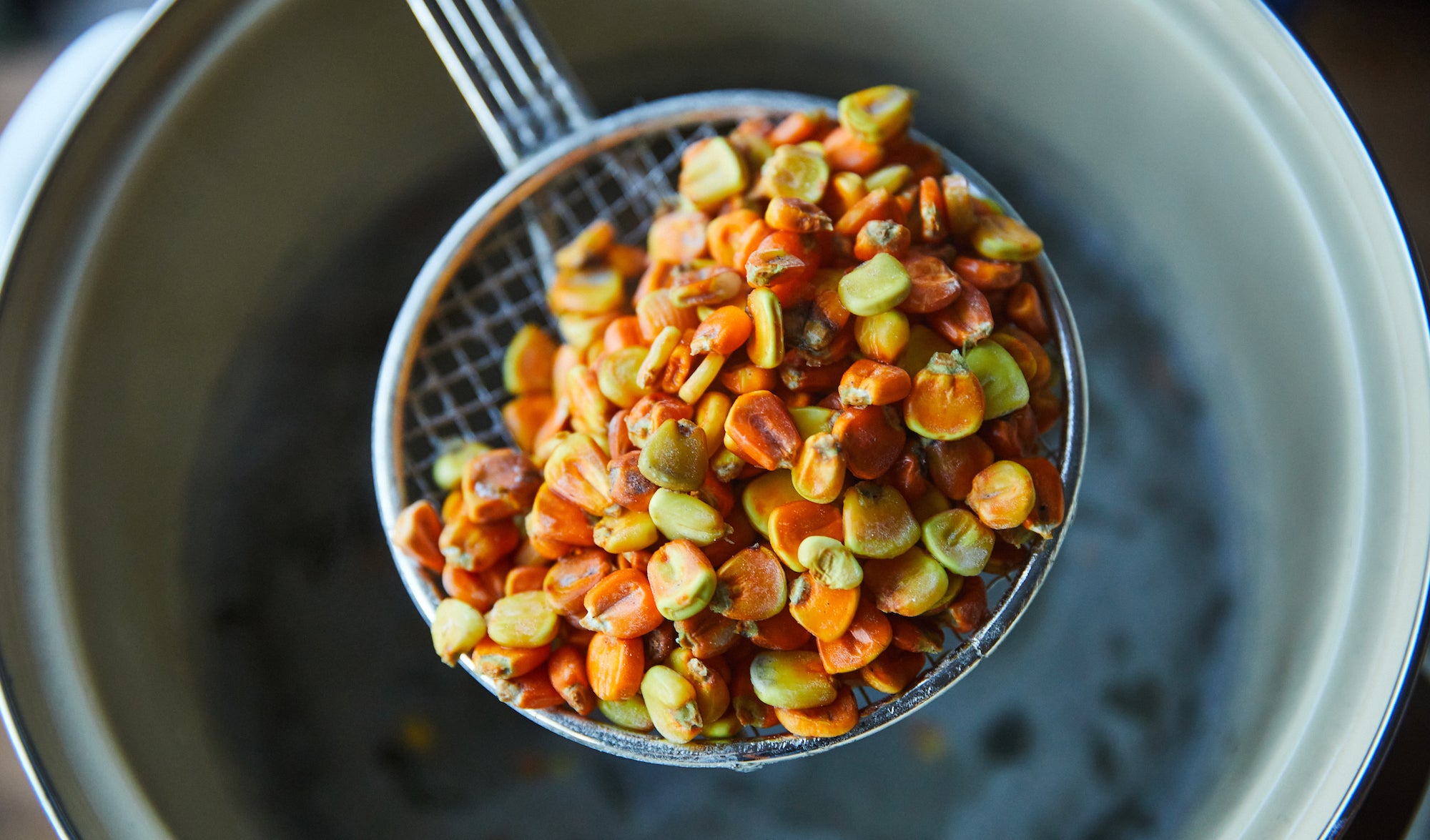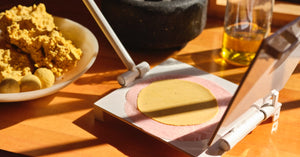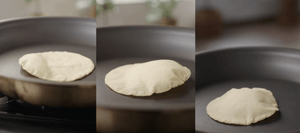How Corn Kernel Structure Affects Masa
How Corn Kernel Structure Affects Masa

September 29, 2020
Do these blue kernels look the same to you?
What about taste? If you had to guess--just by looks--would you say they cooked and tasted the same? (Hint: nope!)
This varietal juxtaposition is a humbling reminder to us of just how much nuance there is to even the simplest-seeming of ingredients. It's also why we say that the "Pre-Cook" step in the kernel-to-masa process is really a thing. It's here that we take into account what our starting ingredient tastes, feels and smells like, and consider how these characteristics will, all together, inform our final product.
While these corns are both indeed blue, they have wildly different compositions. Both produce excellent masa, but deserve more attention than their colors alone. Taking a cross section of each kernel, we can begin to understand a bit better how each kernel's anatomy can impact our finished masa:
Soft Endosperm - This is the bright white, soft, chalky substance that you'll find within each corn kernel. The more of this there is, relative to the rest of the kernel, the softer the finished masa will be. That said, too much of it, and you'll have a hard time achieving an elastic, pliable masa that binds together. Luckily, all of the corn varietals that Masienda sources (with the exception of the pozole varietal called cacahuazintle), are traditional masa varietals that produce consistent results. You'll just want to tweak your approach according to each kernel's unique composition.
Hard Endosperm - Also known as the horneous (or, no joke, "horny") endosperm, this is the part of the corn where much of the masa's color and structure is derived. It is the hardest, most dense part of the kernel. In fact, it's what we're softening the most during in the cooking process. (Sidebar: this is where grits come from--the operative word being "grit," like, gritty or tough.)
Almost all of the corn produced in the US and throughout the global commodity system is bred with a larger concentration of hard endosperm, relative to the cónico varietal and several other landraces. The reason is because harder, denser kernels will be less susceptible to cracking and breaking while being mechanically processed and cleaned; this is important because cracked kernels will ultimately cook faster and yield a gummier finished masa (no bueno). As a result, we have little nuance available to us in commercially-available varieties. But, because Masienda uses smaller-scale cleaning equipment and does much of its sorting by hand, we are able to pull from a diverse range of materials, insofar as kernel shapes, sizes, colors and compositions are concerned. And once we experienced this biodiversity ourselves, we knew we couldn't go back to the alternative.
Taken together, the soft and hard endosperms (collectively, they are the "endosperm") are where the corn's natural protein and starch are derived--both being key emulsifying agents in masa. They are what provide the nutrients to--and protection of--the seed's embryo, or germ.
Germ -This is the embryo of the corn and the only living part of the kernel. It is literally a tiny plant inside of the seed. All of the kernel's natural oils are derived from the germ, another key emulsifying agent, when ground into masa.
Pericarp -This is the kernel's skin or hull. (For context, with popcorn, it's the little yellow or brown bit that usually gets stuck in your teeth.) When we nixtamalize, we are aiming to loosen the pericarp from the kernel, activating the corn's natural hemicellulose within the pericarp, a key binding agent for our masa. When nixtamalized, the pericarp helps retain moisture and encourage pliability in our finished masa.
Tip Cap -A little bit of fiber that connects the kernel to the cob. There's not a ton of real value in it beyond fiber, and many commodity processes remove the tip cap entirely. For us, it's a reminder of the more intimate scale at which Masienda's farming partners operate--it has character, which counts for something!
Each of these parts work together to make a finished masa, and you can play with each of the levers in the kernel-to-masa process to manipulate them all according to your desire. If working with an exceptionally floury corn varietal like cónico (the kernel on the right above), for example, you'll want to make sure that you're including more skins to help bind the masa together and retain moisture. If you're working with a bolita, by contrast, you don't necessarily need as many skins to get the same effect (i.e., you can wash off more).
Cooking from scratch may take a bit more time, but the control you get along each step of the way is well worth the effort.


